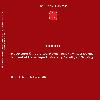An Investigation of Goodness of Model Data Fit
Model Veri Uyumunun Araştırılması
___
- Bechger, T.M., Maris, G., Verstralen, H.H.F.M., & Beguin, A.A. (2003). Using classical test theory in combination with item response theory. Applied Psychological Measurement, 27 (5), 319-334.
- Camilli, G., & Shepard, L.A. (1994). Methods for identifying biased test items (vol. 4). Thousand Oaks, CA: Sage.
- Demirtaşlı, N.Ç. (2002). A study of raven standard progressive matrices test’s item measures under classical and item response models: An empirical comparison. Ankara Üniversitesi Eğitim Bilimleri Fakültesi Dergisi, 35 (2), 71-79.
- Fan, X. (1998). Item response theory and classical test theory: An empirical comparison of their item/person statistics. Educational and Psychological Measurement, 58 (3), 357-381.
- Hambleton, R.K., Swaminathan, H. (1985). Item response theory: Principles and applications. Boston: Kluwer.
- Hambleton, R.K., Swaminathan, H., & Rogers, H.J. (1991). Fundamentals of item response theory. Newbury Park, CA: Sage.
- Leeson, H., & Fletcher, R. (2003, December). An investigation of fit: Comparison of 1-, 2-, 3- parameter IRT models to project asTTle data. Paper presented at the Joint NZARE/AARE Conference, Auckland.
- Mellenbergh, G.J.(1996). Measurement precision in test score and item response models. Psychological Methods, 1, 293-299.
- Özdemir, D. (2004). Çoktan seçmeli testlerin klasik test teorisi ve örtük özellikler teorisine gore hesaplanan psikometrik özelliklerinin iki kategorili ve ağırlıklandırılmış puanlanması yönünden karşılaştırılması. Hacettepe Üniversitesi Eğitim Fakültesi Dergisi, 26, 117-123.
- Reckase, M.D. (1979). Unifactor latent trait models applied to multi-factor tests: Results and implications. Journal of Educational Statistics, 4, 207-230.
- Shephard, L.A., Camilli, G., & Williams, D.M. (1984). Accounting for statistical artifacts in item bias research. Journal of Educational Statistics, 9, 93-128.
- Traub, R.E. (1997). Classical test theory in historical perspective. Educational Measurement: Issues and practice, 8-14.
- Wright, B.D. (1968). Sample-free test calibration and person measurement. Proceedings of the 1967 Invitational Conferences on Testing Problems. Princeton, NJ: Educational Testing Service.
- Yalçın, M. (1999). The fit of one-, two-, three–parameter models of item response theory to ERDD’s achievement test, Middle East Technical University, unpublished master thesis.
- Yayın Aralığı: 4
- Başlangıç: 1986
- Yayıncı: Hacettepe Üniversitesi Eğitim Fakültesi Dekanlığı
Teacher Knowledge on Grammar Teaching: A Case Study
Yasemin DEMİRASLAN, Yasemin USLUER KOÇAK, Filiz MUMCU KUŞKAYA
Successful Supervision from the Student-Teachers' Perspective: An Analysis of Supervisory Talk
Gülden İLİN, Rana YILDIRIM, Jülide İNÖZÜ
Nurten ÖZÇELİK, Nazmiye TECELLİ TOPÇU
An Investigation of Goodness of Model Data Fit
Developmental Differences in the Use Tense Aspect Modality in Narratives
Asimilasyon Prensibinin Anlamının Öğretmen Adaylarınca Kavranması ve Takdir Edilmesi
Cognitive Learning Styles as Reflected in the Test Makeup of English Instructors
